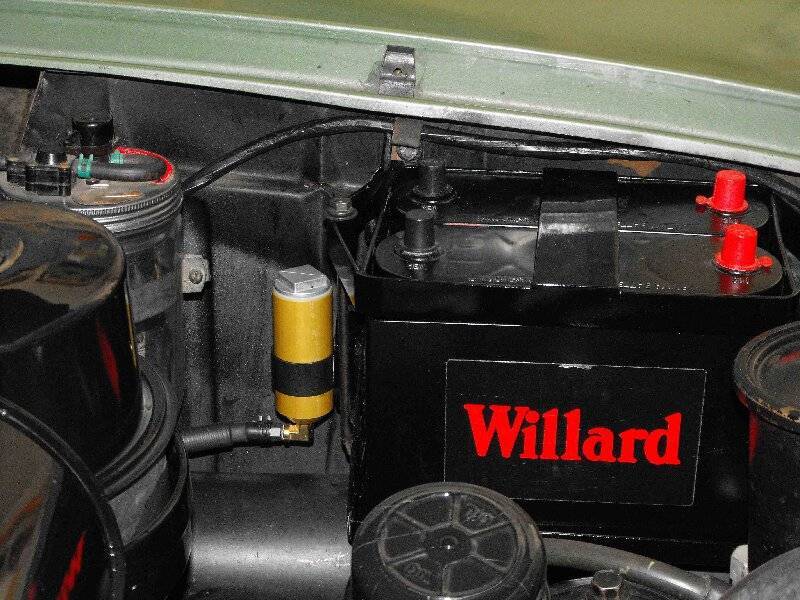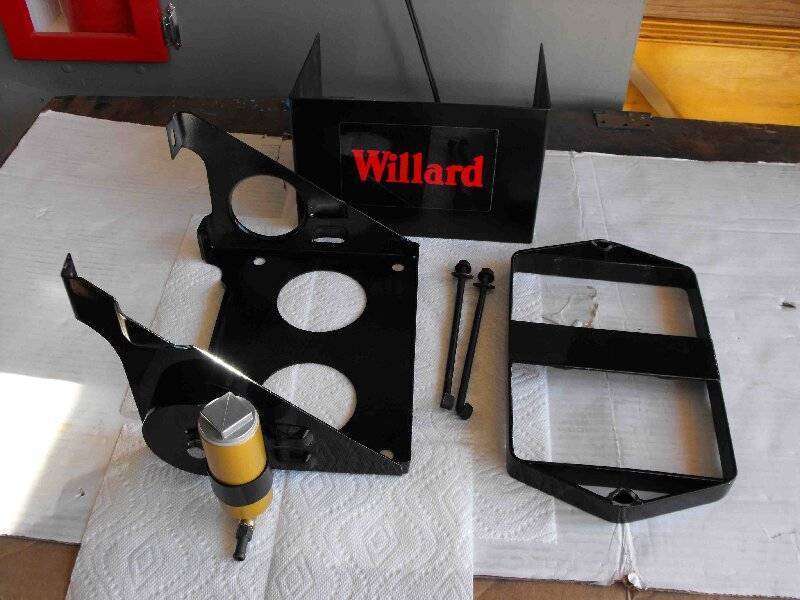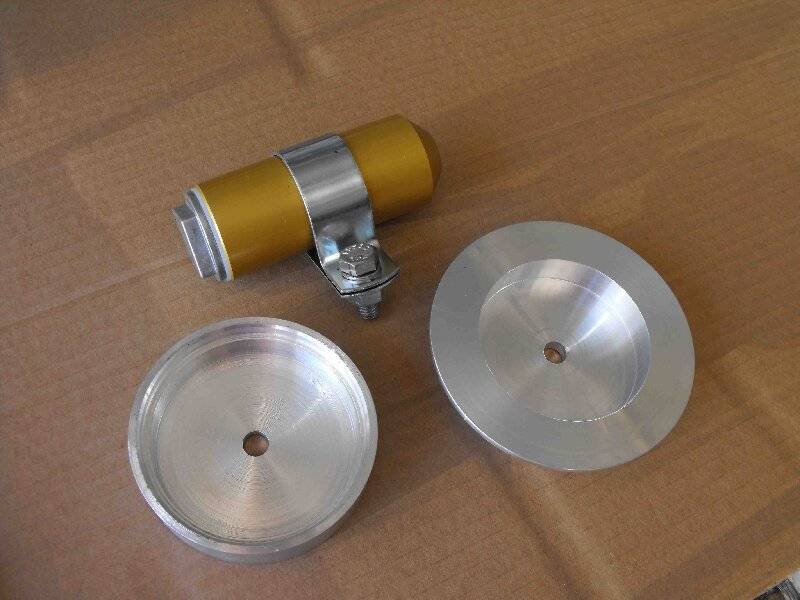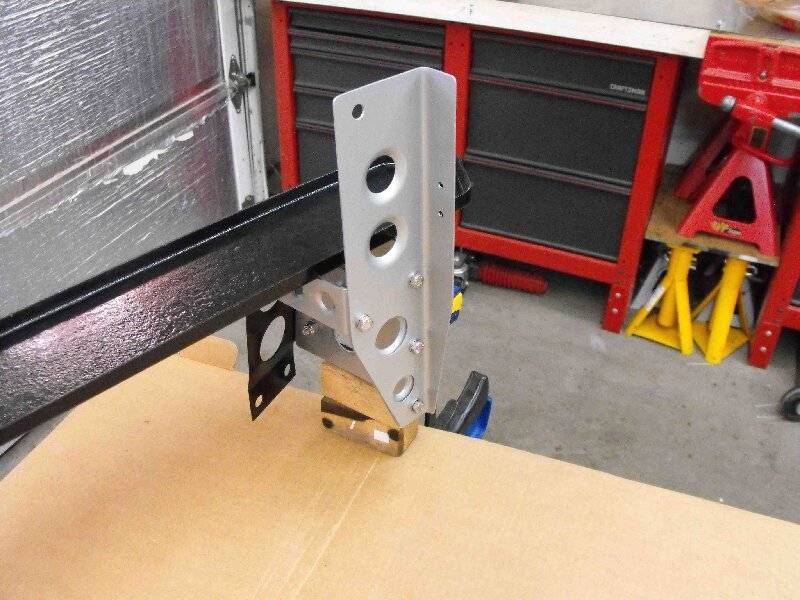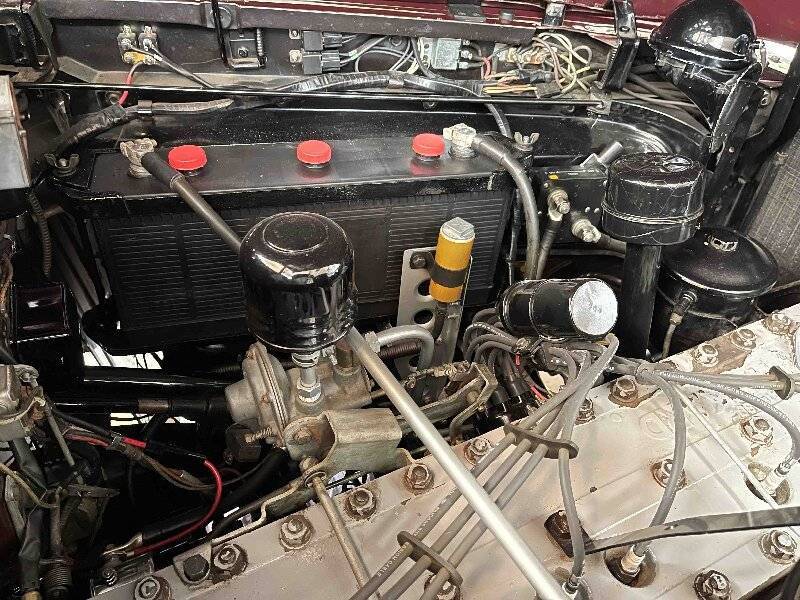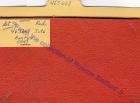|
Another remote master cylinder reservior
|
||||
|---|---|---|---|---|
|
Home away from home
|
I finally installed one on my '54. It's another "drill no holes" design.
dp
Posted on: 2021/11/27 21:03
|
|||
|
||||
|
Re: Another remote master cylinder reservior
|
||||
|---|---|---|---|---|
|
Home away from home

|
I'll take 2 pleeeeez
Posted on: 2021/11/28 12:18
|
|||
|
Steve
Old cars are my passion  1951 Packard 200 1953 Packard Clipper Custom Touring Sedan 1955 Dodge Custom Royal Lancer Tri-tone 1966 Rambler Classic 770 Convertible |
||||
|
||||
|
Re: Another remote master cylinder reservior
|
||||
|---|---|---|---|---|
|
Home away from home
|
Sorry Steve the first production run of 10,000 have been spoken for . . .!
 Howard this is a ‘homebrew’, except for the reservoir and ‘P’ clamp. This design started at the 3-inch hole in the battery tray, and grew from there. An aluminum ‘top hat’ fits into the 3-inch hole from the battery side, and is capped with an aluminum cup. Once the center bolt that holds the ‘P’ clamp is torqued the ‘hat and cup’ pinch the battery tray and the whole mess locks-up quite nicely. There is also one other bolt that does double duty. First it provides sufficient pinch to keep the hat and cup from rotating, and second the bolt inhibits the ‘P’ clamp from rotating downward in the event the central bolt loosens. Photo_1 shows the aluminum ‘top hat’ and ‘cup’. This photo was taken before the second bolt hole was drilled, but it is located essentially at the radius where the ‘P’ clamp is bent to begin the circular portion of the clamp. Photo_2 shows the reservoir mounted on the battery box. The box was removed for a ‘paint-job’, otherwise the reservoir could be installed with the battery box already installed in the car. Photo_3 in the first posting shows the final installation. Parts Used: The Mico reservoir and remote cap were purchased from Capital Clutch & Brake, West Sacramento, CA, contact ‘ccbvinnie@aol.com for details. The cap and reservoir have same thread geometry as Packard master cylinder. Mico Cap 30-030-031 Drilled and tapped 1/8 pipe Mico Reservior 20-920-009 Outlet drilled and tapped 1/8 pipe Expect a lengthy wait for the Mico parts. You provide the tubing fittings that thread into the 1/8 NPT. McMaster-Carr EPDM ¼ ID, ½ OD tubing EPDM is compatible with glycol and silicone based brake fluids. e-Bay Two pieces of 4.25 X 1 aluminum round stock. Minutia: The EPDM tubing is provided abrasion protection with split ½ inch plastic loom, with an outer heat shrink cover. Those details are visible in the photo in the first posting. The intent is; if a leak in the EPDM occurs the fluid will be routed away from the under-hood painted surfaces and exit at the master cylinder. However, I have no intention to test this feature. The ‘P’ clamp is not painted, but was treated with Caswell cold black oxide resurfacing concentrate, with penetrating oil protective coating . . . essentially ‘gun bluing’. The electro-plating applied by Mico was stripped with Lysol toilet bowl cleaner, which works quite well. The aluminum cap was masked where the ‘P’ clamp contacts it, so except for the area where the pinch occurs with the battery tray there is no paint at the interfaces. In the event of the central bolt loosens the anti-rotation pin should inhibit rotation of the reservoir, and the driver’s side air duct keeps the reservoir from exiting straight-down. After the unit was installed I believe the hose alone will keep the reservoir from rotating, so the business of an anti-rotation bolt might be a concept only. Since the ’51-’54 battery tray has enough room to hold two six volt Optima batteries I carry an extra as a back-up . . . just in case. I might be the only six volt car at the Saturday night car show, so getting a ‘jump’ from that crowd might be a challenge. The battery cables were made to reach either battery, so ‘swapping’ batteries involves only ‘swapping’ cables. The hold-down was fabricated from standard band stock purchased from Home Depot. A simple outer cover tries to hide the Optima ‘six-pack’ look, and pretend the car is equipped with a Willard unit. When I was installing this stuff I was reminded, again, on how infrequently I check the master cylinder fluid level . . . it was on the low side. It took a while for the bubbles to subside as the fluid transferred from the upper reservoir to the master cylinder, but the bubbles finally stopped and the level stabilized. That alone is enough evidence to suggest that everything below the new reservoir was leak free, that is, if an air leak existed, say at the master cylinder cover plate, then the fluid level would have gone down without a lot of air bubbles coming to the surface. My first plan was to fabricate this mount out of sheet stock welded into the basic shape of the hat and cup, but my welding skills haven’t been refined to a point there that was a viable option.
Posted on: 2021/11/28 13:44
|
|||
|
||||
|
Re: Another remote master cylinder reservior
|
||||
|---|---|---|---|---|
|
Home away from home
|
I finally finished the remote master cylinder reservoir for my ’48. While I would have liked to install this item without drilling any holes, that didn’t happen. Somehow, I went from drilling no holes to justifying 4 holes in the forward leg of the battery tray to mount the sheet metal bracket. I think when I found a large section of my original tray had been cut out, presumably to remove battery acid damage, my opinion of battery trays changed.
Photo 1 – Shown are the ‘new’ EBay battery tray (without a big cut out), the Mico reservoir, and the 3 pieces of sheet metal that ultimately attach to the forward tray leg (in this view the left side of the tray). The piece with 5 lightening holes attaches to the leg, with the piece with 4 lightening holes bolted to that part of the bracket. The final piece (3 lightening holes) is a brace that stiffens the structure . . . a bunch. Photo 2 – Showing the 3 pieces of sheet metal assembled and attached to the battery tray. To stiffen the sheet stock the lightening holes were dimpled. I would have liked to mount this bracketry off of the aft leg of the tray, but, much to my surprise, the steering column and steering box occupied that space . . . darn. There are two 3/16 holes in the forward fold of the bracket . . . those are to mount a safety tab that is shown in the next photo. Photo 8 – Showing the bracket and reservoir installed. Much like my ’54, the hose was protected from abrasion with a piece of plastic split wire loom and shrink tubing. By ‘zooming-in” a bit the abrasion covering can be seen, as well as the safety tab that inhibits the reservoir from falling out of the ‘P’ clamp in case the pinch bolt loosens. The tab is rubber coated where the reservoir might touch it, and uses 10 X 24 rivet-nuts . . . that makes it a bit easier to R&R if the bracket and reservoir are installed. Also in photo 8: Just forward of the battery is the disconnect switch I bought that from Del City. It is rated at 400 A continuous, 2000 A for 5 seconds . . . I looked-up the current price ($250), and found that the price has just about doubled since I bought mine . . . wow . . . why? Also shown is the headlight relay set-up. Just above the negative battery post is a set of 30A circuit breakers, one for high beam and one for low beam. Above the center battery filler cap are the two relays . . . again one high and one low. The wiring came from Rhode Island Wiring, and is standard modern insulation primary wire over-braided with fabric. The OEM color-coding was maintained. This car has a PowerMaster PowerGEN (6V+) alternator, so the power is first routed to the buss bar connecting the two circuit breakers and then to the firewall mounted (now dummy) voltage regulator. That results in the shortest circuit length for the headlight power . . . they are the first load that the alternator ‘sees’, and when the next high current load is added (I’m thinking a cooling fan) the pole on the other circuit breaker is available. After reading a few of the postings about using a reservoir with a bladder seal, I found many motorcycle items such as this one; Amazon.com: MC Motoparts Black Reservoir Front Oil Fluid Tank Compatible with YZF R1 R6 Speed Triple 1050 R GSX-R 750 Monster 1200 S : Automotive have bladders. This is one of many, and I guess if they can survive on a motorcycle they won’t be much of a problem on a Packard. I bought a silver one of these, but will need to fold a piece of stainless to mount it. I guess the next project should be giving the cylinder head some touch-up paint. dp
Posted on: 2022/3/5 14:11
|
|||
|
||||

 Photo_3.JPG (281.30 KB)
Photo_3.JPG (281.30 KB)